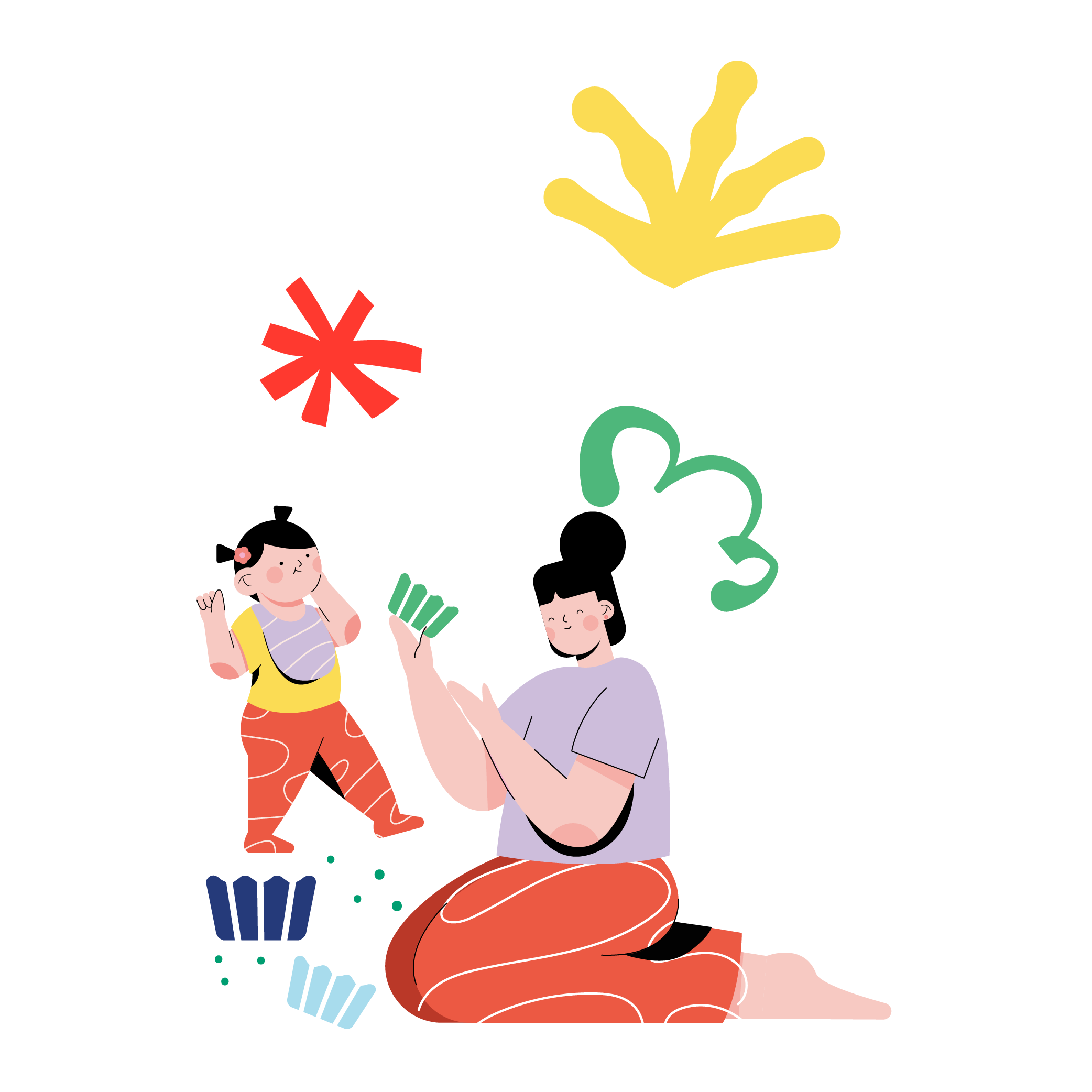creativity. materials:. small toys that make different sounds (like: rattles, spoons, plastic cups). your child will learn. how to use objects to make sounds, an early form of music making. making sounds with objects. creativity and movement. no mess. 10m. here's what to do. 1 play a sound imitation game with me! gather a few toys that we can safely bang on a hard surface (like: a rattle, a spoon, a plastic cup, etc.). 2 show me how you can bang a toy on the ground or table to make a noise. see if i'll copy your sound with a toy i'm holding. 3 keep taking turns for as long as i show interest. 4 repeat with different toys, or on different surfaces (a rug vs. a hard floor). put peer into action. p pause:. help me use my hands to make a rhythm. gently pat them on the floor, or help me clap them together. e engage:. (drum, drum, drum) can you copy papa? like this: (drum drum drum). oh, i like the sound you're making. let me try. (shake shake shake). e encourage:. to encourage me to keep going, copy the way i bang the toy or match the rhythm i make. make sure to pause for several seconds when it's my turn. it might take me a while to join in. r reflect:. how did i experiment with making sounds? not quite ready? if i'm not able to bang a toy yet, let me watch as you play this game. bang different toys against different surfaces, playing different "drumming" rhythms. ready for more? set up a kitchen "drum set" with bowls, pots, and pans. let me bang on the "drum set" with a wooden kitchen spoon, and see what kinds of rhythms and sounds i can make! as your child masters this skill. they will explore different ways to make interesting sounds. creativity. materials:. small toys that make different sounds (like: rattles, spoons, plastic cups). your child will learn. how to use objects to make sounds, an early form of music making. making sounds with objects. creativity and movement. no mess. 10m. here's what to do. 1 play a sound imitation game with me! gather a few toys that we can safely bang on a hard surface (like: a rattle, a spoon, a plastic cup, etc.). 2 show me how you can bang a toy on the ground or table to make a noise. see if i'll copy your sound with a toy i'm holding. 3 keep taking turns for as long as i show interest. 4 repeat with different toys, or on different surfaces (a rug vs. a hard floor). put peer into action. p pause:. help me use my hands to make a rhythm. gently pat them on the floor, or help me clap them together. e engage:. (drum, drum, drum) can you copy papa? like this: (drum drum drum). oh, i like the sound you're making. let me try. (shake shake shake). e encourage:. to encourage me to keep going, copy the way i bang the toy or match the rhythm i make. make sure to pause for several seconds when it's my turn. it might take me a while to join in. r reflect:. how did i experiment with making sounds? not quite ready? if i'm not able to bang a toy yet, let me watch as you play this game. bang different toys against different surfaces, playing different "drumming" rhythms. ready for more? set up a kitchen "drum set" with bowls, pots, and pans. let me bang on the "drum set" with a wooden kitchen spoon, and see what kinds of rhythms and sounds i can make! as your child masters this skill. they will explore different ways to make interesting sounds.



